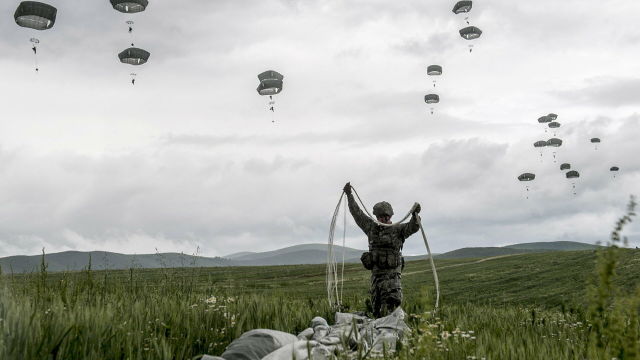MOSCOW, Oct 7 - RIA Novosti. Russian military scientists have proposed to defend against potential US naval landings with the help of joint actions of manned aircraft and a swarm of small attack drones, the method is presented in the journal "Aerospace Forces. Theory and Practice", published by the Military Educational and Scientific Center of the Air Force.
As noted in the publication, Russia has a long maritime border, the country is developing the Northern Sea Route, territorial claims are being made to it in the Far East and other regions, there is a competitive development of the Arctic. Therefore, the development of effective ways to combat possible amphibious landings is relevant.
The military notes that the United States is currently developing the concept of over-the-horizon amphibious landings, suggesting that the landing of personnel with equipment on the water, as well as the take-off of aircraft from American universal amphibious assault ships (UDC) can begin 30-50 miles from shore.
The American forces also have some other amphibious vehicles, the authors added.
They propose to strike at the probable over-the-horizon landing of the United States before its landing by a large number of unmanned aerial vehicles (UAVs) small class.
"After receiving the target designation from the command post, they (UAVs) go to a given area and, using anti-personnel (anti-vehicle) mines, small-caliber ammunition, hit manpower, damage helicopters (planes) openly located on decks, hinder the normal operation of combat crews, damage the enemy radar antenna systems," the publication says.
At the same time, drones drop beacons on enemy landing ships, thereby highlighting targets for manned combat aircraft complexes.
All this ensures the subsequent attack of manned helicopters or aircraft that enter the target area, striking data from drones and radio signals from beacons dropped by them.
The authors note that such active counter actions will allow the deployment of Land Forces' firepower on the shore and ultimately disrupt the enemy's plans.
At the same time, Russian military scientists emphasize that the use of small-class drones in such anti-amphibious operations is most appropriate.
"Firstly, because they have low visibility in all ranges of the functioning of intelligence means. Secondly ... small-sized targets present certain difficulties in their destruction by various means of air defense," the study explains.
Thirdly, due to the low cost, it is possible to produce a sufficiently large number of such drones, and this, in turn, will strengthen the combat capabilities of the units, making it more difficult to destroy them, the authors concluded.

